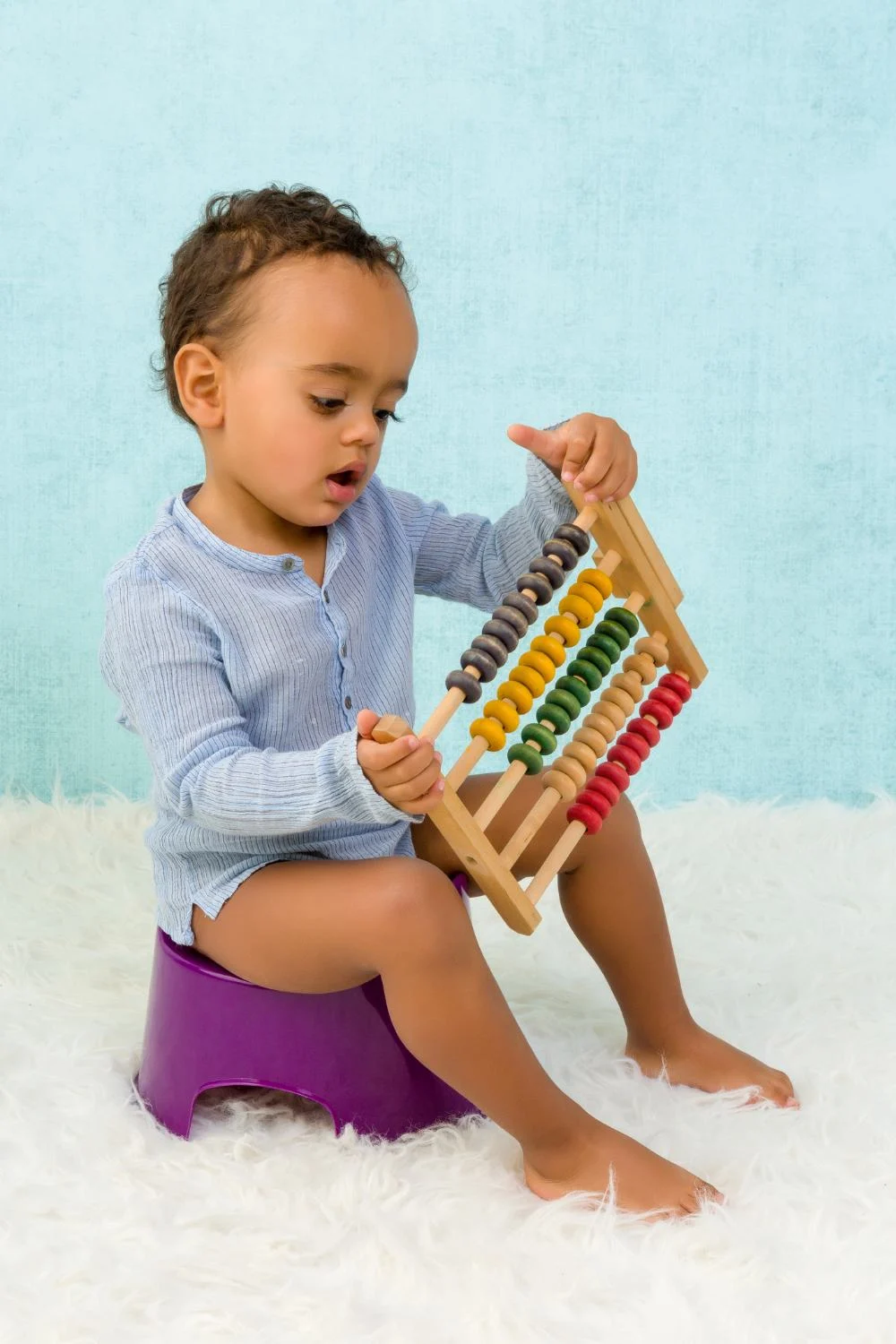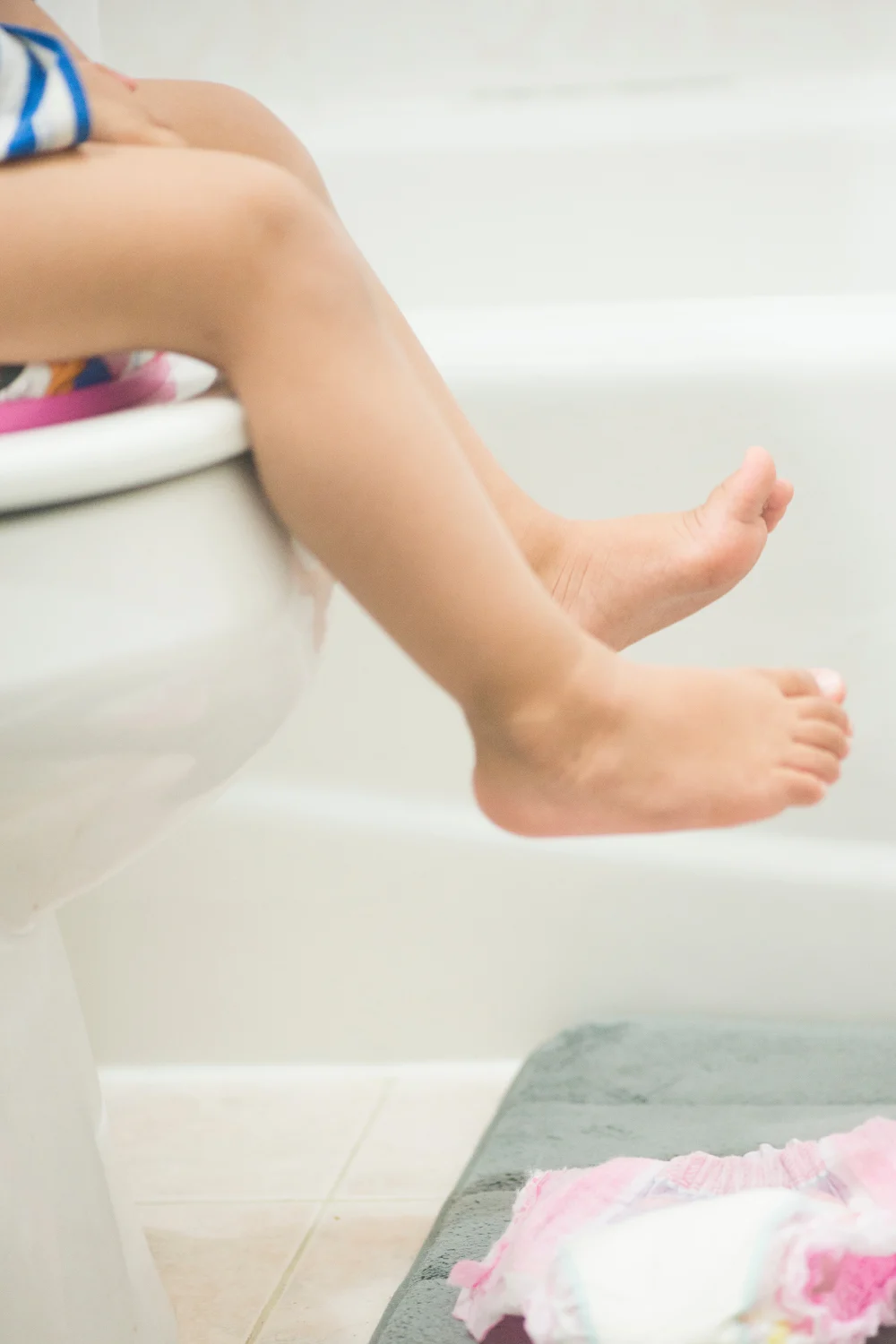It’s time to teach your child how to potty train. This process is a challenging one, but it doesn’t have to be.
If you are wondering when is the right time for your child, this article will help answer that question and many more.
Follow your child’s potty-training signs of readiness and know that you’re on the path to successful potty training!
Disclosure: Bear in mind that some of the links in this post are affiliate links and if you click on them to make a purchase I will earn a commission. Keep in mind that I link these companies and their products because of their quality and not because of the commission I receive from your purchases. The decision is yours, and whether or not you decide to buy something is completely up to you.
Potty training is a big step for any family. It can be stressful, very messy, and frustrating at times.
You may even feel like giving up on potty-training your child.
But it’s also rewarding when you see your little one move from diapers into underwear.
Having a potty-training plan in place can decrease the amount of accidents and messes, but it won’t eliminate every accident.
Keep in mind that each child learns how to potty-train in their own way and time.
There will be accidents along the way while learning, but those accidents will lead to long-term success, so be patient!
Whether it’s your first child or your third child, potty training is different for every single child.
However, there are common potty-training signs of readiness that are universal for all children.
Resist the urge to expect the same results and timeline other children have followed.
The age your toddler is ready to potty train at is going to be on their own time.
Some children start at age 2, while others are not ready until 3 or even 4 years of age.
Girls tend to potty-train at an earlier age and faster compared to boys.
Here are some signs your child is ready to toss the diaper for good!
Potty-Training Signs Of Readiness
Your toddler recognizes a wet diaper
If you notice your toddler begins to pull at their diaper with their hand when they are wet, it’s time to buy a potty chair!
Take your toddler to the store and let them help pick it out.
This is a major reward toward a lifetime self-care task.
Please note that some children will never care if they are wet.
This isn’t the only sign of potty-training readiness. There are plenty more!
Your toddler shows interest in going
The first thing most parents notice is that their child is more interested in using the bathroom.
Your toddler may follow you into the bathroom, ask questions, and want to mimic the same potty-time routine as you.
Some toddlers will strip out of their clothes and run to the bathroom before they know how to use the toilet.
But this is a good thing because this means they will at least attempt to potty-train and have interest in the task itself.
If your toddler is beginning to show interest in by following and watching, start making it a routine to take your child with you to the bathroom every time you go.
This will encourage further interest and begin making a potty-training routine.
Your toddler is dry for long periods of time
When your toddler is staying dry for a few hours at a time, that is a sign they may be ready to potty train.
If your child is able to sleep through the night and stay dry – even if it’s not every night – they are probably ready to start using the toilet.

Your toddler understands what “potty” means
No matter which variation you use: potty, toilet, bathroom, or potty room – when your toddler is able to understand what it means, this can be another sign they’re ready to make the transition to a toilet.
Related Articles: 10 Potty Training Tips For A Child-Led Approach To Potty Training
The Lies I Told My Pre-parenting Self
5 Easy Ways To Gain Patience With Toddlers
Your toddler can communicates the need to “go”
Not all children will or can verbally communicate their need to use the bathroom, but there are other ways your child may tell you it’s time to pee or poop.
It’s a good idea to teach your toddler the Sign Language sign for “bathroom”, in case they cannot (or choose not to) communicate the urgency verbally.
I use it with my two-year-old even though he cannot say potty or bathroom clearly.
To make the bathroom sign- Make a fist and place your thumb between the index finger and middle finger. Then, move your fist back and forth.
It’s best to use the sign while also saying “bathroom.”
This sign is an easy sign not only to remember, but to help your child communicate the need to use the bathroom.
Your toddler can undress without assistance
This is one of the most crucial potty-training signs of readiness!
To use the bathroom, your child needs to be able to undress themselves at least from the waist down. Why is it so important?
This non-verbal form of communication indicates that your child has a wet diaper or needs to use the bathroom. Plus, this is an important step in the potty-training process.

Your toddler can use the potty chair
If you purchase a potty chair and teach your toddler how to use it, they should be able to get down to the chair (and up from it) on their own.
You may want to have them practice when they don’t have to go to the bathroom, just so they’re prepared when it’s time to go.
Your toddler follows simple instructions
Being able to follow instructions is another potty-training readiness skill.
There is a difference in listening to your instructions versus understanding and completing the instructions.
If your toddler is following you to the bathroom before they start potty-training.
This is an opportunity to watch your child through the steps of completing this self-care task.
Instead of just showing your child how to use the potty, verbally say the steps out loud!
-“First, we lift the toilet lid.”
-“Then, we pull down our pants.”
-“Sit till you go pee or poop.”
These steps and more are a great way to explain how to use the toilet to your child.
Related Articles: 5 Activities For Learning Colors With Play Scarves
At-Home Montessori Activities To Aid Development
How To Toddler Proof Your House
Final Thoughts About Potty-Training Signs Of Readiness
Once your child starts showing potty-training signs of readiness you need to start making potty-training a daily routine and make if fun!
Making potty training fun rather than stressful is going to make your child feel like a big kid and increase their chance of success.
Possibly even shortening the length of time it takes for your child to learn how to go on their own.
Use a reward chart with stickers, make Cheerio targets, or simple reward with small candy like M&M’s can make it both fun and encouraging.
No matter their age, staying positive and patient is key when potty-training a toddler!
Remember: every child is different. While the average age for toilet training is anywhere from 18 months to 3 years old you can’t push your child to start potty-training until they are showing the above potty-training signs of readiness.
If you have any concerns about your child not picking up or understanding potty-training, it’s important to discuss them with your child’s pediatrician.
While most children show signs of readiness between two to three years of age, some children will not potty-train well due to cognitive delays, sensory issues, and autism.
It’s important to note that children with developmental delays like sensory processing disorder and autism typically potty-train later than their peers.
But now matter your child’s age, if your child’s showing the above signs of readiness it may be time to grab reward stickers/candy, a potty chair, and start making using the bathroom a daily routine with your toddler!
Works Cited
When to Start Potty Training: 7 Readiness Signs | Pampers
10 Signs Your Child Is Ready to Start Potty Training | Parents

